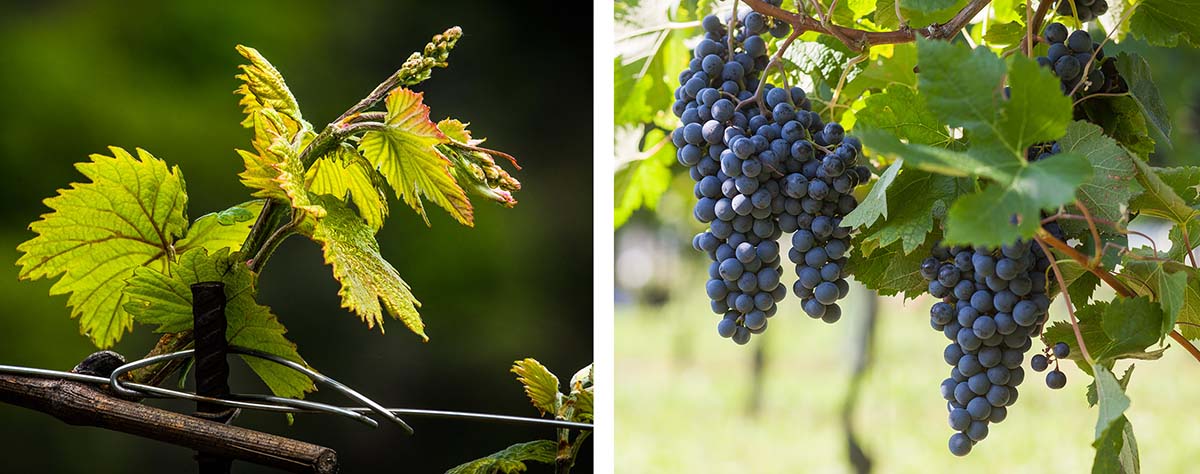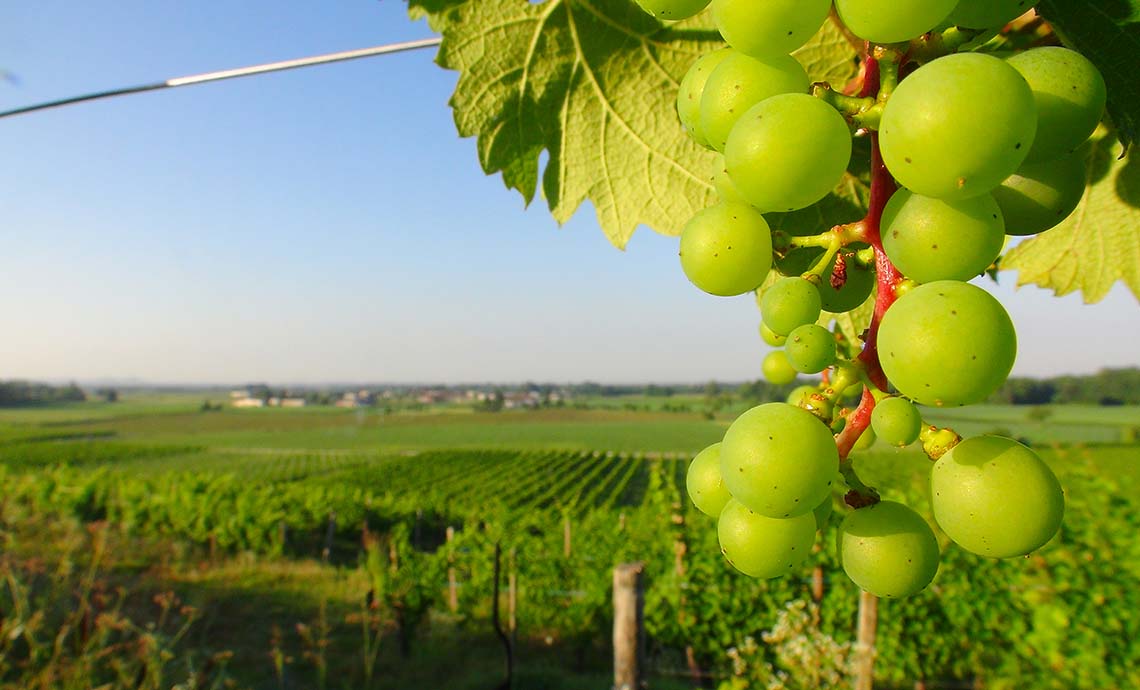The annual life cycle of the vine: The phenological phases
The vine, like every living being, has a life cycle, which includes different phases from birth to decline, and are known as the phenological phases of the vine. The characteristics of the plant, its productivity and the quality of its fruit are different at different ages. The life cycle is in turn marked by the phases of the annual cycle: bleeding, budbreak, vegetation, flowering, fruit set, veraison, ripening, and winter rest.
Bleeding
The long rest of the vine during the cold months is interrupted by the rise in temperature, usually in March. A lymphatic liquid is exuded from the cuts caused by dormant pruning, and this marks the resumption of root growth. This will allow the trunk and the shoots to reabsorb the water and mineral salts lost during the cold season.
Budbreak
After bleeding, budding occurs, preceded by the swelling of the buds. When these open, the first leaves appear. This phase highlights the real vegetative recovery and is affected by the weather conditions preceding its occurrence.
Vegetation
The leaflets grow and the new shoots develop. The development of vegetation continues until August (the so-called cane ripening period) in which the shoot matures, turning from green to brown.

Flowering
The opening of the flower takes place between the months of May and June. This phase is very delicate as it can be compromised by sudden frost or pouring rain.
The fruit set
A few days after flowering, small spheres appear: a grape is born from each pollinated flower. The unfertilized flowers fall off, giving rise to the phenomenon of coulure.
Veraison
Vegetative activity ends with the beginning of grape ripening, a phenomenon known as veraison. The berries change colour, from green to red or black, depending on the variety, while white grape varieties show greater transparency of the flesh, taking on a colour tending to yellow-green.
During this phase, the sugar content of the flesh and tartaric acid increase, while the amount of malic acid decreases. Depending on the climate and variety, veraison usually takes place between August and September.
Ripening
Grapes are ripe when they achieve a perfect balance between sugars and acids (known as technological ripeness) and when the tannins (which give the sensation of astringency in red wines) and the colouring substances, contained mostly in the skin, are extractable (phenolic ripeness). This makes it possible to obtain a wine in which there is a balance between aromas and structure.
The beginning of ripening is marked by veraison and continues for a variable period: about 30 days for early varieties, 50-60 days for late varieties.
The winter rest
Once the leaves have fallen, the vine again enters the phase of winter rest. The cold strengthens the plant by maturing the wood and helps eliminate insects and parasites. We then need to wait for the warmth of another spring for a new annual cycle of the vine to begin.
Follow us on Facebook and Instagram
Maria Cristina Pugnetti
Could it be interesting for you:
None found

